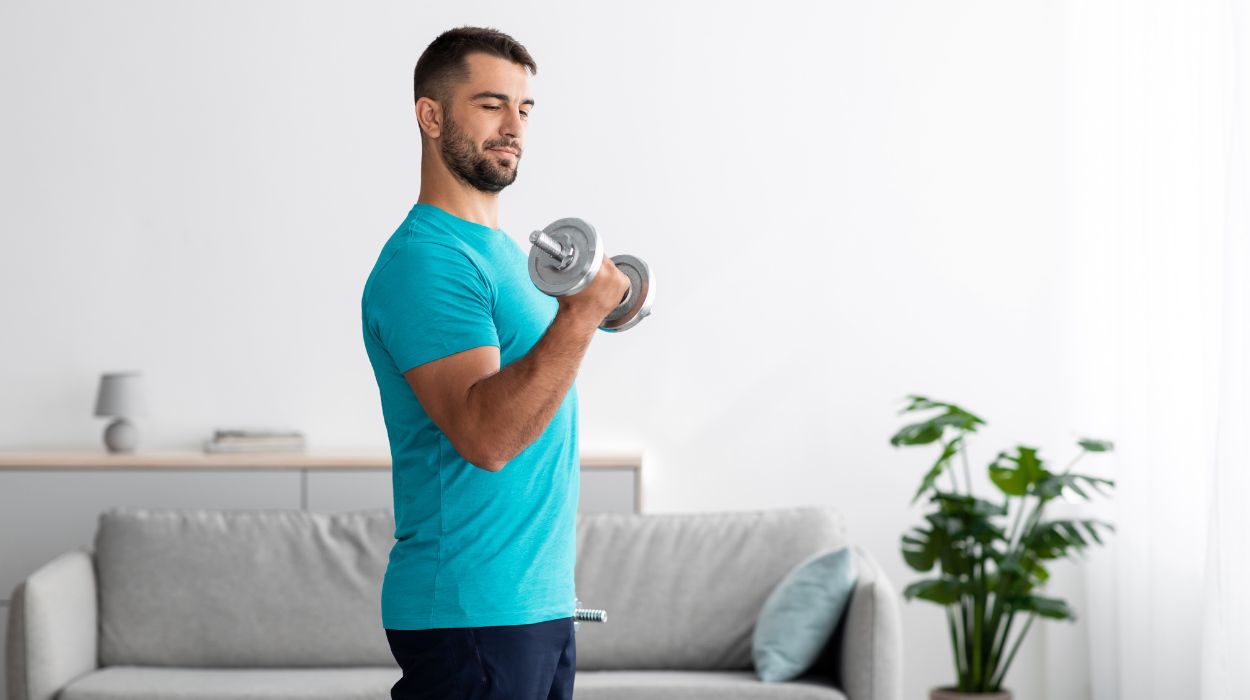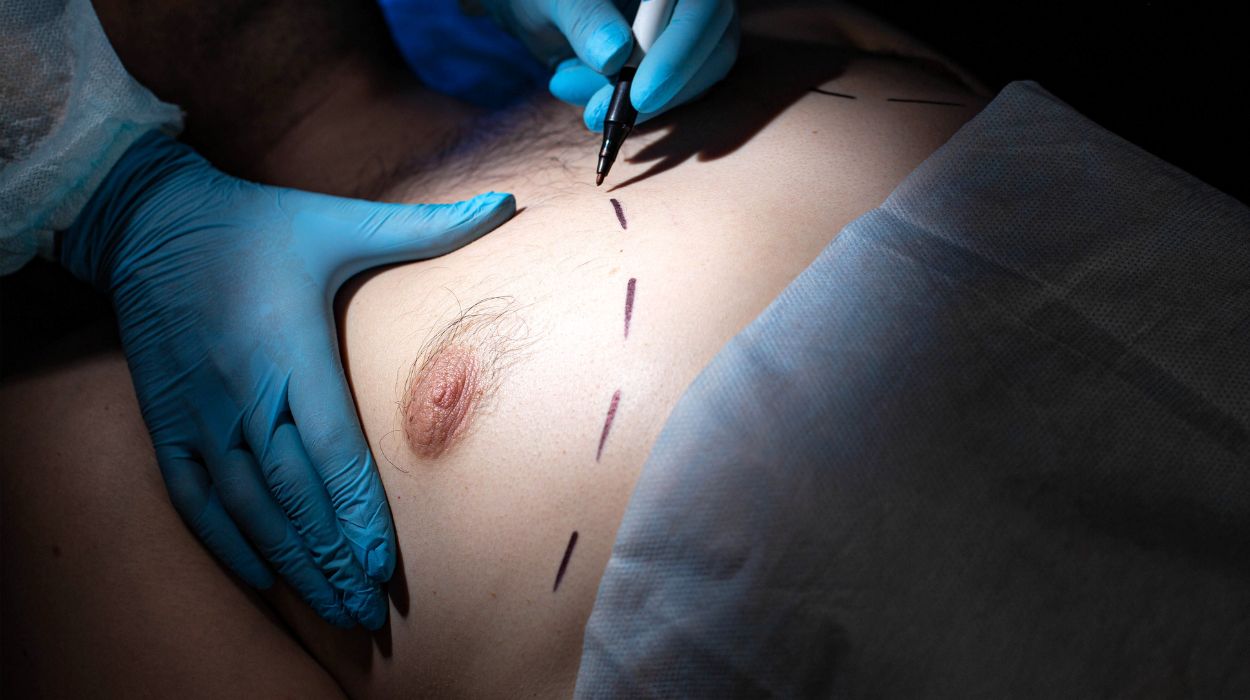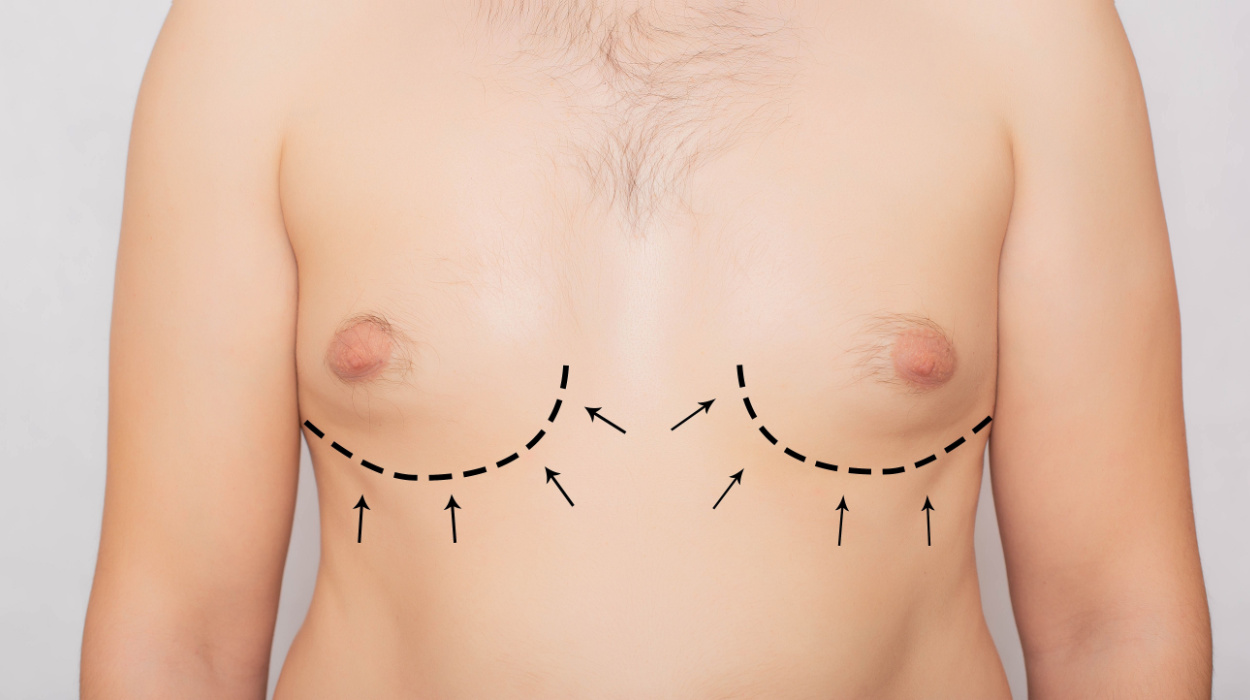Swollen nipples or man boobs are a common issue that can affect men of all ages, including teenage boys. The change in the nipple may be due to enlarged breast glands, too much breast tissue, or excess fat cells in the breast.
While this may be worrying, swollen nipples aren’t a sign of severe health issues. Even so, it can negatively affect mental well-being and cause discomfort. One of the most effective solutions to this issue is weight loss, which reduces excess fat in the chest area.
Let’s look at other approaches on how to lose nipples below.
How To Get Rid Of Puffy Nipples
You can lose nipple fat through:
- Exercise: Do cardio workouts and chest-focused strength and resistance exercises to tone chest muscles.
- Healthy diet: Emphasize whole foods, low-fat, and lean protein options to support fat loss.
- Surgery: Opt for specialized procedures like liposuction or male breast reduction surgery to remove the excess fat tissue from your breasts.
- Topical treatments: Use topical treatments like lotions and gels to eliminate excess chest fat and slow fat growth.
- Supplements: Testosterone boosters can restore hormonal balances and help build muscle for a more masculine male chest.
How To Reduce Puffy Nipples
Men with big nipples often find themselves in discomfort due to the appearance of their chests. Although this may seem like an aesthetic concern, it can take a toll on both mental and physical well-being, prompting a search for effective solutions.
Let’s look at how to get rid of puffy nipples below:
Exercise Regularly

Puffy nipples are supported by body fat and the lack of chest muscles. This makes exercise a practical approach to lose weight and decrease the appearance of male breasts. Think targeted exercise-weight lifting and chest exercises like dumbbell flyes, push-ups, and chest dips.
For the best results, combine this with full-body cardiovascular exercises. For example, you can swim or run. These exercises engage all muscle groups. Research shows that cardiovascular and resistant exercises[1] reduce fatty tissue and help lose weight.
You can also enlist the help of a personal trainer to help get rid of excess chest fat and maintain the results long-term.
Healthy Diet
Fat cells release estrogen[2] in small amounts. This hormone helps with breast development. Losing fat can lead to decreased hormone production and limit excessive breast tissue growth. Consuming fewer calories and opting for nutrient-rich foods can also help with weight loss, which decreases the appearance of puffy nipples.
Research shows that dietary changes such as these can support fat-burning[3] and reduce body fat. This is especially true when paired with regular exercise. You can also do the following to achieve a balanced diet:
- Increase raw fruits and vegetable consumption. Fruits and vegetables are low in energy but high in fiber and water. This helps create longer periods of fullness,[4] which helps with weight loss.
- Opt for whole grains and foods instead of white bread and pasta.
- Swap full-fat dairy products for low-fat versions.
- Eat lean proteins like beans and fish.
- Avoid processed foods and foods with added sugars.
Supplements
Herbal supplements, like testosterone boosters, can naturally boost testosterone levels in the body. Testosterone is a hormone that helps develop male traits like chest muscles or pecks. One ingredient that’s commonly used in testosterone-boosting supplements is ashwagandha.
Ashwagandha naturally boosts testosterone levels[5] while supporting exercise and strength training.[6] These effects may help reduce excess breast tissue growth and facilitate faster chest muscle growth, ultimately decreasing the appearance of nipple fat.
Fat-burning supplements and herbs can also accelerate and support the body’s fat-burning processes. Although the weight loss cannot be directed to the chest area, it can help eliminate excess body fat and reduce the appearance of male breasts.
Topical Treatments
A study showed that an herbal fat-loss lotion that contains guarana, caffeine, and black pepper helped reduce subcutaneous fat and fat cell growth.[7] Lotions such as these can be used as a topical treatment for puffy nipples.
It can be applied around the breast and nipple area to tighten skin, stop fat cell growth, and eliminate excess subcutaneous fat often seen in puffy nipples. This will improve the appearance of your chest.
Other research reported that a therapeutic regimen of prednisone, a corticosteroid, improved the appearance of male breasts[8] in a patient with adrenal insufficiency. After the treatment, there was no persisting breast enlargement.
However, there is little evidence supporting the use of corticosteroid replacement therapy to treat puffy nipples in the absence of underlying hormonal imbalances. So, this option is typically used with lifestyle changes like diet and exercise.
Surgery And Cosmetic Procedures

Those who do not respond to lifestyle changes may opt for the surgical removal of nipple fat. Opposite to a breast enlargement procedure, male chest reduction surgery or gynecomastia surgery reduces the size of breasts.[9]
The procedure is done under general anesthetic and involves the removal of excess breast glandular tissue or excess skin to correct more severe cases of gynecomastia. Other surgical and cosmetic options include:
- Liposuction:[10] This surgery removes breast fat but not breast gland tissue.
- Mastectomy:[11] This removes glandular breast tissue using a small incision. It is often used for more severe cases of gynecomastia.
- Non-invasive fat reduction: This includes treatments like fat-freezing[12] or topical lasers, which eliminate excess fat cells and reduce fat stores non-invasively, without incisions.
The treatment option or solution you opt for is based on individual circumstances and the severity of the issue.
What Are Puffy Nipples?
Gynecomastia is an aesthetic problem that is considered a benign condition in the male breasts. The condition is seen in one in every three men.[13] Those with the condition find that their nipple takes on a prominent cone shape.
The areolas, the darker areas around the nipple, protrude, forming a small bump that doesn’t follow the typical contour of the chest. While puffy nipples aren’t known to cause serious health issues, they can lead to discomfort and make individuals feel self-conscious.
The severity of the nipple abnormality can vary among individuals due to different causes, prompting the need for various treatment options. The positive news is that puffy nipples are a treatable concern.
Various solutions, such as changes in diet, exercise, or surgical options, can be considered to restore a more typical nipple appearance and masculine chest.
How To Tell If You Have Puffy Nipples?
Symptoms of puffy nipples are hard to miss. The nipple appears swollen or protruding because of the excess glandular or fatty tissue underneath the nipples. Other symptoms include:
- Tenderness or pain.
- High estrogen levels.
- Uneven breast growth.
- Nipple discharge or chafing.
- Enlarged breast glands in men.
- Low testosterone levels in men.
- Changes in breast shape beyond just the nipples.
You can look out for these symptoms and gently feel for any unusual firmness or puffiness around the nipple area.
Causes Of Puffy Nipples
Both males and females have a pair of sex hormones: Testosterone and estrogen. Testosterone develops male characteristics like chest muscles, while estrogen is in charge of developing female characteristics like breasts.
This is why males have higher testosterone levels while females have higher estrogen levels. However, sometimes, men may have higher-than-normal estrogen levels. This can cause mammary glands and breast tissue to swell up, causing gynecomastia.
One common symptom of this condition is puffy nipples or swelling in the chest area. Other causes of nipple fat include:
- Genetics.
- Being overweight.[14]
- Certain exercises.
- Hormonal imbalance.
- The use of anabolic steroids or specific prescription medications.
Conclusion
Puffy nipples in men don’t signal a medical emergency, but they can be uncomfortable. Common causes of puffy nipples are a fluctuation in hormone levels or testosterone production, weight gain, genetics, use of steroids, or certain medications.
Depending on the cause and severity of the issue, you can use an individual treatment option or a combination of them. Treatment options include dieting, exercising regularly, supplements, topical treatments, surgical procedures, or non-invasive cosmetic treatments.
These approaches will help reduce or eliminate excess tissue or fat behind the nipple to reveal pectoral muscles for a more masculine chest.
Frequently Asked Questions
Yes, it is. You can reduce puffiness through diet, exercise, supplements, or topical treatments like creams that reduce inflammation with use. You can also opt for a surgical procedure or non-invasive cosmetic treatments like lasers.
Yes, they do. Losing weight can lead to a reduction in breast size, including the size of the nipple. However, results may vary from one person to another.
Yes, it can. Running is a cardiovascular exercise that can lead to general weight loss, including in the chest area.
You can wear compression undershirts and layered or loose-fitting clothes. You can
also wear darker colors that will hide the shape or protruding nipples.


